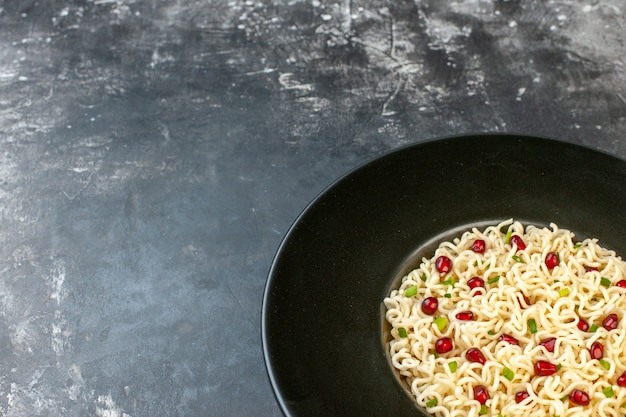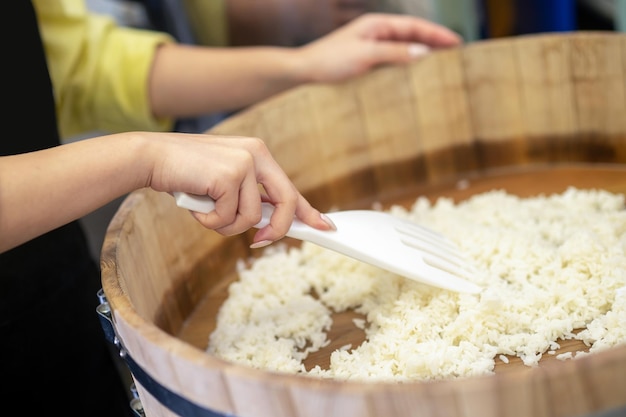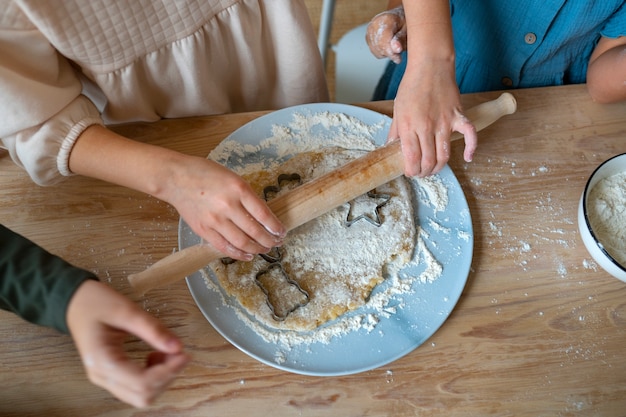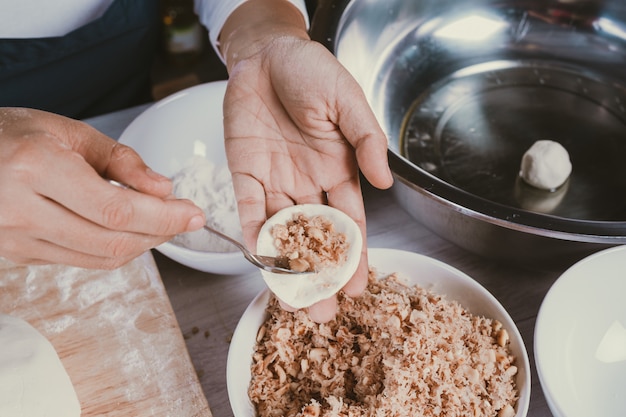I love Spanish rice. It's a dish that always brings back happy memories of family gatherings and weekend meals, filled with laughter and good company. Over the years, I've perfected my own version, but it's not just about the recipe – it's about understanding the history, the key ingredients, and the subtle techniques that make this dish truly sing.
So, buckle up, because this isn't just any old recipe. It's a complete guide, a culinary adventure, that will take you from the origins of Spanish rice to mastering the art of creating your own flavour-packed masterpiece. Get ready to impress your mates with your newfound Spanish rice expertise!
(Part 1) A Bit of History

The Story of Spanish Rice: A culinary journey
Before we dive into the recipe, let's take a quick trip back in time to uncover the fascinating history of Spanish rice. You see, despite the name, this dish isn't actually a traditional Spanish recipe. It's a story of fusion, of flavours blending and evolving over time.
It all started with the Spanish colonisation of the Americas in the 15th century. Spanish explorers brought rice from Asia, and it quickly became a staple food in the New World. But the dish we know as "Spanish rice" didn't actually emerge in Spain. It took root in the United States, particularly in the Southern states, where it was influenced by the vibrant culinary traditions of African and Caribbean cultures.
A Fusion of Cultures, A Fusion of Flavours
This blend of Spanish, African, and Caribbean influences gave birth to a truly unique dish. Imagine: the base is rice, but then you have the smoky depth of paprika, the vibrant zest of tomatoes, the warm embrace of cumin – it's a melting pot of flavour!
This fusion of cultures is what makes Spanish rice so special. It's a dish that reflects the richness and diversity of the American culinary landscape.
A Dish for Every Occasion
Today, Spanish rice is a versatile dish that's perfect for any occasion. It's a simple yet satisfying weeknight meal, a crowd-pleasing addition to a festive gathering, and a comforting dish that always hits the spot.
(Part 2) The Ingredients: Building Blocks of Flavour

The Foundation: choosing the right rice
When it comes to Spanish rice, the star of the show is undoubtedly the rice. But not just any rice will do. We need something with a bit of bite, a rice that can stand up to the rich flavours and absorb the delicious sauce.
My go-to choice is long-grain white rice. It cooks up beautifully, light and fluffy, with each grain distinct, perfect for soaking up all the lovely flavours. You could use medium-grain rice too, but it tends to be a bit stickier, so you might need to adjust the cooking time. Avoid short-grain rice, as it will make a mushy mess.
The Flavour Bomb: The Sofrito
The real secret to authentic Spanish rice lies in the sofrito, a flavour-packed base that adds incredible depth and richness to the dish. Think of it as the soul of the dish, the heart that makes everything else sing.
- Onion: The sweetness and aroma of a medium onion, finely chopped, are essential to the sofrito. It provides a base for all the other flavours to build upon.
- Green Bell Pepper: A green bell pepper, finely chopped, adds a touch of freshness and a subtle peppery flavour to the sofrito. It's that perfect counterpoint to the other ingredients.
- Garlic: Now, don't be shy with the garlic! Two cloves, minced, unleash their pungent, earthy aroma, adding depth and complexity to the flavour profile.
- Tomatoes: Two large, ripe tomatoes, diced, are crucial for the sauce's body and acidity. If you can find them, Roma tomatoes are a great choice. They have a firmer texture and a richer flavour.
- Olive Oil: A good quality olive oil is essential for a rich flavour and a smooth texture. It helps to coax out the flavours of the other ingredients and gives the sofrito a beautiful shine.
- Spices: This is where you get to play around a bit. A good base includes:
- Paprika: Smoky paprika is the signature spice that adds that distinct Spanish touch. It adds a warmth and smokiness that you won't find anywhere else.
- Cumin: Ground cumin brings warmth and earthiness to the mix. It adds a depth of flavour that complements the paprika beautifully.
- Oregano: Dried oregano adds a herbal touch that complements the other spices beautifully. It adds a fresh, aromatic note that balances out the richness of the sofrito.
The Extras: Adding Depth and Personality
Now, let's get to the fun part – the extras that can take your Spanish rice to the next level! These ingredients add flavour, texture, and even protein, allowing you to customize the dish to your liking.
- Chicken or beef broth: A good broth adds depth and richness to the dish. If you're feeling fancy, you can even use a homemade broth. This will really make your Spanish rice sing with flavour.
- Chicken or Beef: Add some protein for a more substantial meal. I like to use diced chicken or beef, but you can also use chorizo or even prawns. It adds another layer of flavour and texture.
- Frozen Peas or Corn: A handful of frozen peas or corn adds a touch of sweetness and vibrant colour. They also add a nice crunch and a burst of freshness.
- Green Chillies: For those who like a bit of heat, add a few diced green chillies to the sofrito. They'll add a kick of flavour and a touch of heat to the dish.
(Part 3) Making the Sofrito: The Heart of the Dish

A Recipe for Flavour: The Sofrito Technique
Alright, now we're getting to the heart of the matter – making the sofrito. It's the foundation of our Spanish rice, the base that holds all the flavours together. So pay attention, because this is where the real magic happens.
The Step-by-Step Guide
- Sauté the Aromatics: Heat a generous amount of olive oil in a large saucepan or dutch oven over medium heat. Add the chopped onion and green bell pepper to the pan and sauté until softened and fragrant, about 5-7 minutes. You want the onions to be translucent and the peppers to have softened slightly.
- Add the Garlic: Reduce the heat to low and add the minced garlic. Cook for 30 seconds, stirring constantly, to release the garlic's aroma without burning it. Garlic is a delicate flavour, so it's important not to overcook it.
- Incorporate the Tomatoes: Add the diced tomatoes to the pan and cook for about 10 minutes, stirring occasionally. The tomatoes should soften and release their juices, creating a thick sauce base. You want the tomatoes to break down and become incorporated into the sofrito, creating a smooth sauce base.
- Spice it Up: Stir in the paprika, cumin, and oregano. Cook for a minute, letting the spices bloom and release their aromas. This will infuse the sofrito with a depth of flavour that will make your Spanish rice sing.
Tips for the Perfect Sofrito
- Don't Overcook: The goal is to create a fragrant and flavourful base without overcooking the ingredients. Keep an eye on things, and don't let the sofrito burn.
- Taste as You Go: Season the sofrito with salt and pepper to taste. You can also add a pinch of sugar if the tomatoes are overly tart. This will balance the acidity and create a more harmonious flavour profile.
- Make it Ahead: The sofrito can be made ahead of time and stored in the refrigerator for up to 3 days. It's a great time-saving trick for busy cooks. This way, you can have the base of your Spanish rice ready to go whenever you need it.
(Part 4) Cooking the Rice: A Symphony of Flavour
Bringing it All Together: The Art of rice cooking
Now that we have our flavour-packed sofrito ready, it's time to cook the rice. This is where the real magic happens, and it's all about finding that perfect balance between fluffy rice and a rich, flavorful sauce.
The Steps to Perfectly Cooked Rice
- Rinse and Drain: Rinse the rice under cold running water until the water runs clear. This helps remove excess starch and prevents the rice from becoming sticky. Drain well.
- Add the Rice: Add the rinsed rice to the pan with the sofrito. Stir to combine the rice and the sofrito thoroughly. This ensures that every grain of rice is coated in the flavour-packed sofrito.
- Pour in the Broth: Pour in the chicken or beef broth. Use enough broth to cover the rice by about an inch. Remember, the rice will absorb the liquid as it cooks. The broth adds a depth of flavour and helps the rice cook evenly.
- Bring to a Boil: Bring the mixture to a boil over medium-high heat. Once the mixture is boiling, reduce the heat to low, cover the pan, and simmer for 15-20 minutes, or until the rice is tender and has absorbed most of the broth.
- Fluff and Rest: After 20 minutes, remove the pan from the heat and let it rest, covered, for 5 minutes. This allows the rice to finish cooking and absorb any remaining liquid. Once rested, fluff the rice with a fork to separate the grains. This will create light, fluffy rice that is perfect for absorbing the flavours of the sofrito.
Tips for perfect rice
- Don't Stir Too Much: Once the rice is added to the sofrito and broth, resist the urge to stir it constantly. Let it cook undisturbed for most of the time, to ensure that it cooks evenly. Over-stirring can break the rice grains and make them mushy.
- Adjust Cooking Time: The cooking time may vary depending on the type of rice and the amount of liquid. Keep an eye on the rice as it cooks and adjust the time accordingly. You can test if the rice is cooked by tasting a grain. If it's tender and has absorbed most of the liquid, it's done.
- Test for Doneness: To test if the rice is cooked, taste a grain. If it's tender and has absorbed most of the liquid, it's done. Don't overcook the rice, as this will make it dry and crumbly.
(Part 5) The Finishing Touches: Elevating the Dish
Adding the Extras: The Final Flavour Burst
Alright, our rice is cooked, but it's not quite ready to be devoured yet. This is the time to add those extras that will really make your Spanish rice sing. These finishing touches are what take the dish from good to great.
The Steps to Bring Your Rice to Life
- Incorporate the Protein: If you're using chicken or beef, add the diced meat to the pan during the last 5 minutes of cooking. Stir gently to combine. The heat will cook the meat through, and the flavours will meld with the rice and sofrito.
- Stir in the Veggies: During the last 2 minutes of cooking, add the frozen peas or corn to the pan. Stir gently to combine. This ensures that they stay tender and vibrant, adding a burst of colour and freshness to the dish.
- Adjust Seasoning: Taste the rice and adjust the seasoning with salt, pepper, or a touch of sugar if needed. This is your chance to personalize the flavour profile and ensure that the rice is seasoned to your liking.
- Garnish with Fresh Herbs: For a final touch, garnish the Spanish rice with chopped fresh cilantro, parsley, or chives. This adds a fresh, aromatic touch and a pop of colour to the dish.
Tips for Perfecting the Extras
- Don't Overcook the Veggies: Adding the peas or corn during the last 2 minutes of cooking ensures that they stay tender and vibrant. Overcooking them will make them mushy and lose their flavour.
- Experiment with Herbs: Get creative with your herbs! Fresh basil, thyme, or even a pinch of smoked paprika can add a delicious flavour twist. Don't be afraid to explore and discover your own favourite combinations.
(Part 6) Serving Spanish Rice: A Feast for the Senses
Time to Feast: Presenting Your Culinary Creation
Your Spanish rice is now ready to be devoured. But before you dig in, let's talk about presentation. The way you serve your Spanish rice can really elevate the dining experience.
Serving Suggestions
- side dish: Serve the Spanish rice as a side dish to grilled meats, fish, or poultry. It's a perfect accompaniment to grilled chicken, chorizo, or even a simple piece of salmon. The rice absorbs the flavours of the main course, creating a harmonious blend of tastes and textures.
- Main Course: If you're using chicken or beef, you can make the Spanish rice into a satisfying main course. Serve it with a dollop of sour cream or salsa for a delicious and comforting meal. This transforms the rice into a complete meal, providing both flavour and sustenance.
- Family Style: For a more casual approach, serve the Spanish rice in a large bowl for everyone to share. Let everyone help themselves to the rice, and add their favourite toppings, such as shredded cheese, avocado, or a squeeze of lime juice. This encourages a social dining experience, allowing everyone to customize their portion according to their preferences.
Presentation Tips
- Garnish: A sprinkle of fresh cilantro or parsley adds a pop of colour and freshness to the dish. You can also garnish with a wedge of lime or a few slices of red pepper. These additions bring a visual appeal and enhance the overall flavour of the dish.
- Serving Dishes: Use a shallow bowl or platter to showcase the colourful rice and its enticing aroma. This allows the colours and textures of the rice to shine through.
- Warmth: Serve the Spanish rice warm for the best flavour and texture. Serving it warm allows the flavours to bloom and enhances the overall sensory experience.
(Part 7) Variations of Spanish Rice: Exploring Flavour Frontiers
A World of Flavour: Unleashing the Versatility of Spanish Rice
Spanish rice is incredibly versatile. You can create endless variations by adding different ingredients and spices, exploring the vast world of flavours and textures.
Regional Flavours: A Culinary Journey Through the Americas
- Mexican Spanish Rice: Often called "Arroz con Pollo," this version typically includes diced chicken, peppers, onions, and sometimes peas. It's often seasoned with cumin, oregano, and chili powder. This variation reflects the vibrant culinary traditions of Mexico, where rice is a staple ingredient.
- Cuban Spanish Rice: Cuban Spanish rice, also known as "Arroz Moros y Cristianos," is a combination of black beans and rice. It's typically seasoned with garlic, onions, and oregano, and often includes a bit of pork or chicken. This variation is a testament to the rich history and culinary influences of Cuba.
- Puerto Rican Spanish Rice: Puerto Rican Spanish rice is often seasoned with sofrito, adobo, and a touch of turmeric for a vibrant yellow colour. This variation reflects the unique flavours and traditions of Puerto Rican cuisine.
Spice it Up: Adding Heat and Zing
- Spicy Spanish Rice: Add a few diced green chillies or a pinch of cayenne pepper to the sofrito for a kick of heat. This variation caters to those who enjoy a bit of spice in their food.
- Citrusy Spanish Rice: Add a squeeze of lime juice or orange zest to the rice for a bright and refreshing flavour. This variation adds a touch of citrusy brightness to the dish.
- Seafood Spanish Rice: Substitute chicken or beef with seafood, such as prawns, crab, or mussels, for a delicious and healthy meal. This variation allows you to explore the wonderful world of seafood flavours.
(Part 8) FAQs: Addressing Common Queries
Your Questions Answered: Unveiling the Secrets of Spanish Rice
You've got questions, I've got answers! Let's clear up some common queries about making Spanish rice.
- What's the Best Type of Rice for Spanish Rice?
Long-grain white rice is the best choice for Spanish rice. It cooks up fluffy and separate, and absorbs the flavours of the sofrito beautifully. You can also use medium-grain rice, but keep in mind that it will be stickier. This choice will affect the texture of your rice, so choose wisely.
- Can I Make Spanish Rice in the slow cooker?
Yes! You can absolutely make Spanish rice in the slow cooker. Just combine all the ingredients in the slow cooker, and cook on low for 6-8 hours or on high for 3-4 hours. This is a great option for a hands-off meal, allowing you to enjoy the aroma of Spanish rice filling your home.
- What if I Don't Have Chicken or Beef Broth?
If you don't have chicken or beef broth, you can use vegetable broth, water, or even tomato juice. The flavour will be slightly different, but it will still be delicious. This allows you to use what you have on hand, ensuring that you can enjoy Spanish rice even if you don't have all the traditional ingredients.
- Can I Add Other Vegetables to Spanish Rice?
Absolutely! Feel free to add your favourite vegetables to the Spanish rice. Some popular additions include carrots, corn, green beans, or even diced zucchini. This allows you to customize the dish according to your preferences and add a vibrant mix of colours and textures.
- How Do I Store Leftover Spanish Rice?
Leftover Spanish rice can be stored in an airtight container in the refrigerator for up to 3 days. Reheat it in the microwave or on the stovetop. You can also use leftover Spanish rice in salads, burritos, or even fried rice. This ensures that you can enjoy your Spanish rice even after it's been made.
(Part 9) Conclusion: Embark on Your Culinary Adventure
Right, so there you have it! Your comprehensive guide to making authentic Spanish rice, from its origins to its variations and everything in between.
I hope you've enjoyed this journey into the world of Spanish rice. Remember, the key is to experiment and find what you enjoy most. There's no one right way to make Spanish rice, so go on, unleash your inner chef and create your own masterpiece.
Happy cooking!
Everyone is watching

How to Cook Frozen Lobster Tails Perfectly: A Step-by-Step Guide
RecipesLobster. Just the word conjures up images of lavish meals, special occasions, and a taste of luxury. But let's...

Pigs in a Blanket Cooking Time: How Long to Bake for Perfect Results
RecipesAh, pigs in a blanket. Just the name conjures up images of those delightful little parcels of crispy pastry en...

Pork Fillet Cooking Time: How Long to Cook It Perfectly
RecipesPork fillet, or tenderloin as it's sometimes called, is a real favourite in our house. It's so versatile, and...

The Ultimate Guide to Tender, Juicy Pulled Pork
RecipesRight, let's talk pulled pork. It's one of those dishes that just screams "comfort food," doesn't it? I mean...

The Ultimate Guide to Cooking Delicious Frankfurters
RecipesLet's face it, we all love a good frankfurter. It's a classic, simple, and always satisfying. But let's be rea...
